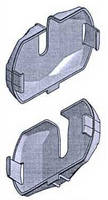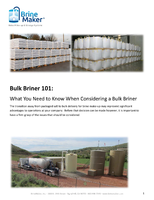5 Engineering Solutions for Injection Molding

Advances in engineering software, which ease the design and manufacturing process of plastic parts, have progressed considerably since the introduction of 2D and 3D design software.
1. Part Design
Software upgrades have moved injection molding design into 2D and 3D levels to minimize problems and errors in calculation. Accuracy and attention to minute details of design are easily accomplished using these software upgrades. Program upgrades make it possible to minimize shrinkage, define the parting lines, provide sufficient draft angles for perfect ejection and for identifying gate locations for mold design.
This approach secures the ability to manufacture parts to be molded, and makes it possible to evaluate from mold-design perspectives, each angle of the part before beginning production and aides next steps for mold design by supporting proper actions, gate locations, water cooling and air venting.
Time and cost are reduced, transitions from design to production are smoother and more direct. Corrections become a simple process of re-generation of the part-file. Engineering services for injection molding that include 2D and 3D analysis guarantee cost-effectiveness and efficiency.
2. Mold Design
Computer aided engineering software for part-file production for injection molding eases the process of adhering to design considerations such as keeping wall thicknesses uniform, preventing warping and improving the mold fill.
Using generous radius calculations at all corners makes it easier to avoid sharp corners, making increases in stress-concentration that often lead to part failure. Using this process also makes it easier to accomplish sufficient draft angles for easy removal from the mold. Using ribs or gussets helps with improved part stiffness and avoids use of thick sections.
3. Mold Fill Simulation
Using software to virtually simulate filling, packing and cooling of a molded plastic part allows the mold/part designer to make critical decisions before manufacturing. Simulations provide visual representations on how the mold will fill.
Potential problems are identified ahead of time, such as which areas of the mold will not fill with plastic, or where weld lines will develop on parts where different flow-fronts meet and plastic welds itself together. This software helps determine if those welds will hold structurally and assists in simulation of various gate locations that may be able to improve this and other situations.
4. Design for Manufacturing Ease
Any time engineering services for injection molding can prevent redesign, can avoid weaknesses in part functioning and prevent part-failure in the manufacturing process-- cost savings and analysis advances have been accomplished.
5. Material Selection
2 and 3D part-files are also used for materials analysis and stress-testing in computer simulations. This makes it possible to consider part-designs for general quality and structural-rigidity, in addition to injection molding manufacturing evaluations. This helps determine which materials are best-suited for the project.
Taking advantage of the progress in engineering services for injection molding using software manufacturing and design upgrades-- can make a significant difference in effectiveness and efficiency for any manufacturer's bottom line.
When working with Crescent Industries, our engineers use their knowledge as injection molders and mold builders when producing part designs and mold designs as well as utilizing 3D mold fill simulation software. For more information on our engineering services for injection molding please see our website www.crescentind.com or call Toll Free: 1-800-411-3844.




